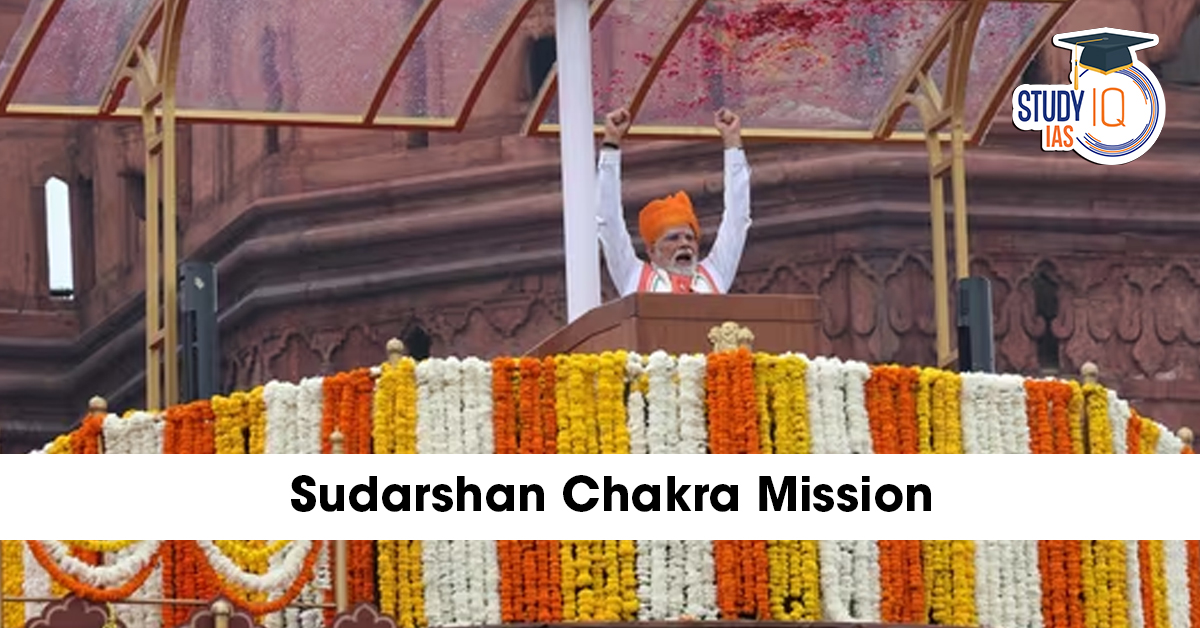Table of Contents
Context
India has launched Mission Sudarshan Chakra to develop a nationwide, AI-driven air defence shield integrating radars, satellites, and laser weapons to counter emerging aerial threats.
About Mission Sudarshan Chakra
- Mission Sudarshan Chakra is a new national initiative aimed at building a comprehensive, integrated air defence shield across India.
- The system will integrate 6,000–7,000 radars, 52 surveillance satellites (by 2030), and Directed Energy Weapons (DEWs) into one real-time, networked defence ecosystem.
- Objective: To establish a multilayered, AI-driven, space-linked air defence network capable of:
- Monitoring, detecting, and tracking enemy threats beyond visual range.
- Identifying and neutralising hostile aircraft, drones, and missiles.
- Providing nationwide coverage beyond military bases, extending to key population centres and strategic installations.
Key Components of the Mission
- Multi-Layered Defence Architecture: The shield will combine:
- Over-the-Horizon (OTH) Radars: Capable of tracking targets far beyond the line of sight, deep into enemy territory.
- Short-, Medium-, and Long-Range Missile Systems: For interception at multiple distances.
- Anti-Drone Systems and Air Defence Guns: For close-range and swarm threats.
- Directed Energy Weapons (DEWs): High-powered laser-based systems for neutralising aerial targets instantly.
- Space-Based Surveillance Integration: Under Phase 3 of the Space-Based Surveillance (SBS) Programme, 52 new surveillance satellites are to be deployed by 2030. These satellites will:
- Continuously scan and track enemy movements from space.
- Feed data into Sudarshan Chakra’s central AI-driven command network.
- Cue missile or DEW systems for interception.
- Massive Radar Network: Between 6,000 and 7,000 radars will be deployed across the country. Includes multiple types:
- OTH radars for long-range detection.
- Ground-based and mobile radars for tactical tracking.
- Coastal and high-altitude radars for strategic depth.
- These will be interlinked through a centralised command-and-control system to share data in real time.
- Integration with Advanced Computing and AI: The mission will rely heavily on:
- Artificial Intelligence (AI) for real-time threat assessment.
- Big Data and Advanced Analytics for processing massive volumes of sensor data.
- Quantum Computing and Large Language Models (LLMs) for predictive threat modelling and automated response systems.
|
Recent DRDO Achievements |
|


 UN ESCAP Asia-Pacific Disaster Report 20...
UN ESCAP Asia-Pacific Disaster Report 20...
 Rare Hawfinch Sighting in Corbett Nation...
Rare Hawfinch Sighting in Corbett Nation...
 Bnei Menashe Community : The Lost Tribe ...
Bnei Menashe Community : The Lost Tribe ...

























